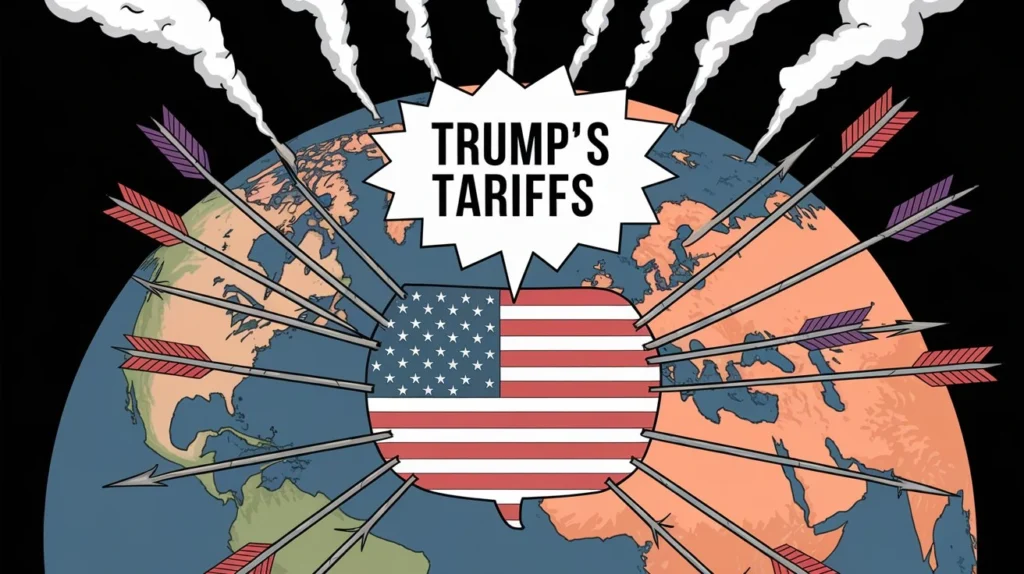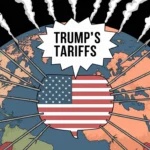Tariffs have long been a tool for economic policy, but under Donald Trump’s administration, they became a central strategy in reshaping global trade. The Trump tariffs imposed on countries like China, the European Union, and Mexico aimed to reduce trade deficits, bring manufacturing back to the U.S., and exert pressure on foreign economies. While these policies had domestic appeal, they also triggered significant global economic consequences. This article explores the impacts of Trump tariffs on international trade, industries, and geopolitical relations.
The Rationale Behind Trump’s Tariff Strategy
Trump tariffs were justified as a way to protect American jobs and industries. The goal was to reduce dependency on foreign manufacturing and encourage domestic production. By imposing higher import taxes on steel, aluminum, and technology components, the administration sought to level the playing field for American companies. However, the tariffs also sparked trade wars, leading to retaliatory measures from affected countries. Understanding the intended benefits and drawbacks of these policies is key to evaluating their long-term effects.
Impact on Global Trade
Trade Wars and Retaliatory Measures
One of the most immediate effects of Trump tariffs was the rise of trade wars. China responded with tariffs on American agricultural products, impacting U.S. farmers who relied on exports. The European Union placed tariffs on American goods such as bourbon and motorcycles. These retaliatory measures led to disruptions in global supply chains, increasing costs for businesses and consumers alike.
Shifts in Import and Export Patterns
As Trump tariffs made certain imports more expensive, countries sought alternative suppliers. For example, China increased trade with Brazil for soybeans instead of purchasing from U.S. farmers. Similarly, American businesses looked for new sources of raw materials to avoid high import duties. This shift in trade relationships altered the global economic landscape and forced companies to rethink their supply chains.
Economic Consequences
Effects on American Businesses
While Trump tariffs aimed to protect U.S. manufacturers, they also increased production costs. Companies relying on imported raw materials, such as automotive and technology firms, faced higher expenses. Some businesses passed these costs on to consumers, resulting in price hikes on everyday goods. Others struggled to compete, leading to job losses in sectors affected by supply chain disruptions.
Impact on Consumers
American consumers bore the burden of increased costs due to Trump tariffs. Higher import taxes led to more expensive electronics, household goods, and automobiles. Inflationary pressures grew as businesses adjusted prices to cover additional costs. Lower-income households, which spend a larger portion of their income on goods, felt the impact more severely.
Agriculture and Farming Losses
U.S. farmers were among the hardest hit by retaliatory Trump tariffs. China, a major buyer of American soybeans and pork, reduced imports in response to U.S. tariffs. This led to declining farm incomes and increased reliance on government subsidies. The agriculture sector faced uncertainty as trade negotiations fluctuated, affecting long-term planning for farmers.
Geopolitical Implications
Strained Relations with Allies and Rivals
Trump tariffs strained relations with key allies such as Canada, Germany, and Japan. The imposition of tariffs on steel and aluminum frustrated diplomatic partners, leading to tensions in trade negotiations. Meanwhile, relations with China deteriorated, escalating into a broader economic and technological rivalry.
Strengthening of Alternative Trade Alliances
In response to Trump tariffs, other nations strengthened their trade alliances. The European Union and China expanded their trade agreements, reducing reliance on American markets. The U.S.-Mexico-Canada Agreement (USMCA) replaced NAFTA, but it reflected shifts in trade dynamics influenced by tariff battles.
Long-Term Effects on U.S. Global Influence
While Trump tariffs were intended to assert American economic strength, they also encouraged other nations to diversify their economic partnerships. Countries sought to reduce reliance on U.S. imports, creating a more multipolar trade environment. This shift may have lasting effects on America’s role as a dominant global economic force.
The Future of Tariff Policies
Reversing or Continuing Tariff Strategies?
The Biden administration took steps to review and modify some Trump tariffs but maintained key measures against China. Future administrations may either build on these policies or seek multilateral trade agreements to repair strained relations. The long-term impact of Trump tariffs will depend on evolving economic conditions and global trade negotiations.
Lessons for Policymakers
The Trump tariffs strategy highlighted the complexities of global trade. While protectionist policies can provide short-term gains for specific industries, they also come with economic costs. Policymakers must weigh the benefits of trade restrictions against their broader impact on economic growth, employment, and diplomatic relations.
Conclusion
Trump tariffs reshaped international trade, affecting businesses, consumers, and global economic alliances. While they aimed to boost American manufacturing and reduce trade deficits, they also led to trade wars, increased costs, and strained diplomatic ties. As the world continues to adjust to these shifts, the debate over the effectiveness of tariffs remains ongoing. Understanding these impacts is crucial for future trade policies and economic strategies.





